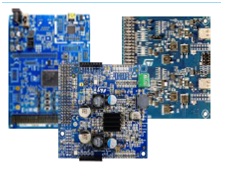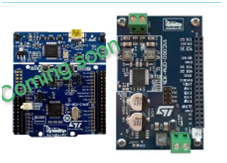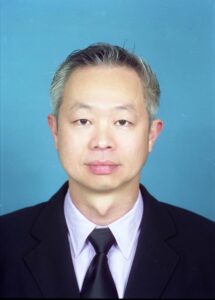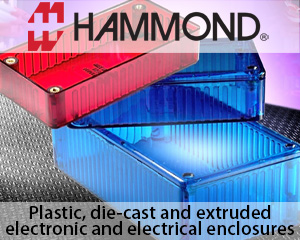STMicroelectronics recently introduced AutoDevKit – a unique automotive development platform for faster ECU prototyping. In a media briefing with Giovanni Luca Sarica, Head of Mass Market Business Development, Group Strategic Office Member, Automotive and Discrete Group, STMicroelectronics, MH TEY, Regional Senior Director of Marketing & Applications, Automotive Products, Asia Pacific, STMicroelectronics and Max Vizzini, Application Manager, Mass Market Business Development, Automotive & Discrete Group shared more details about this platform and its benefits to customers.
Please start with introducing ST Leadership in Automotive domain

Giovanni Luca Sarica: We are a leader in the automotive market with 30 years of experience in this field. We cover all the main applications in today’s traditional automotive domains, and we are also one of the major leaders driving innovations and transformations in automotive, which are mainly related to the vehicle electrification and the assisted autonomous driving systems that the modern cars are adopting today.
ST is leader on this domain thanks for its comprehensive automotive dedicated product portfolio ranging from digital solutions, like automotive dedicated microcontroller which is the core of most of the applications, and a wide range of smart power solutions. In these domains, we are the first supplier and the leader in the market of automotive applications. On top to those product offerings, we offer ASIC analog and ASIC digital products that are tailored especially for powertrain, passive safety applications. In the digital ASIC product domain, we are leading with solution for the vision system, that as you know it is one of the main pillars of the automotive and transportation industry today because of the autonomous vehicles.
Completing our product offer, we have a large variety of power and discrete devices, coming in silicon and in wide band gap materials. Those kinds of automotive products are very important for supporting today’s trends in terms of vehicle electrification. One more time, ST is the leader on these domains thanks to our SiC products. With these kinds of solution, we are the market leader and we are the first WW supplier with automotive qualified SiC power products for the electric vehicle.
Can you please elaborate on new megatrends and challenges in Automotive market
Giovanni Luca Sarica: Nowadays the car is becoming electrified and autonomous and assisted driving systems are adopted in nowadays’ cars. Because of these trends and larger demand for electronics components, the car is becoming more and more complex. The number of the ECUs in today’s cars is growing very fast, and the electronic pervasiveness in each module installed in a car is much higher compared with the traditional vehicle produced just few years ago. Another important trend today, that we see in automotive is vehicle digitalization. Because of the vehicle digitalization, car makers are forced to restructure their vehicle architectures. And at the same time higher computational power is needed in order to approach and manage properly the larger amount of data we typically have in nowadays’ cars.
What are the major difficulties with traditional approach in today’s car design?
Giovanni Luca Sarica: In traditional approach, the designer is selecting the products that will be used in the application. The designer should start to study those components and technologies that will be adopted in the application. For each component, designer should create the hardware, designing the PCB assembling and testing the boards. Every ECU and every module use multiple technologies inside, which means that multiple functionalities and multiple sensors & actuators should be integrated in a single module and after that, the designer should create software able to acquire information and activating functions, and so on.
Under this scenario, the other burden for the designer is to reduce the level of complexity from the software perspective. We mentioned these fundamental steps in the development of the application. Today, the software complexity of a car is much higher compared with an aircraft. Because of that, we estimate that a lot of efforts and time is needed in a new development because of the software. It is taking up to 70% of time / cost for a new software development.
Under these scenarios, ST decided to introduce an automotive dedicated development environment, the so-called AutoDevKit. We announced this new tool in the market in February 2020 through our press release.
What is unique about AutoDevKit? How does it solve today’s car design complexities and challenges?
Giovanni Luca Sarica: AutoDevKit definitely addresses new challenges that customers and designers are approaching today, by supporting the designer during the development phase of a new electronic module for an automotive and transportation application, securing faster prototyping, which is becoming a very important step for reducing the overall time to market.
ST’s AutoDevKit can achieve this goal by leveraging the wide product portfolios dedicated to automotive solution as we mentioned before. This product portfolio is enabling ST AutoDevKit to offer a large variety of building blocks that can be assembled in an application, taking advantage of a Lego- like approach that is the foundation of AutoDevKit. At the end, AutoDevKitis offering to our customers and designers an easy way for creating and assembling new applications, as well as a simplified environment assists and guides the designer, step by step, in creating and developing the software that is needed for the new applications.
If we compare AutoDevKit’s approach with the traditional ones designer can do the job in a few hours whereas a very long time is required with the traditional approach.
Can you please detail on the working of AutoDevKit?
Giovanni Luca Sarica: AutoDevKit, customers can start from an application idea and an application specific target, and by using AutoDevKit, they can select the building blocks and the technologies that can be used and order only what is needed. The designer is not spending time anymore in developing the hardware for single components. The designer is guided in creating the overall application because the software development environment is providing all these step-by-step instructions for creating the application according to the customer requirements. At the same time, AutoDevKit is simplifying customer’s lives because we provide the first software stack that is enabling customers to use ST technologies and ST products, starting the trial of the application without any specific knowledge of products and technologies adopted. AutoDevKit is simplifying customer’s lives, drastically cutting the time-to-the market during an application development.
Are these kits supporting to software defined cars trends? Is there similar product in the market like AutoDevKit?
Max Vizzini: The trend towards software defined cars is something real, and we are advocating and investing in it. AutoDevKit is nothing against this trend. On the contrary, we are fully supporting this kind of approach. Because we also put together more and more components, moving from very simple ECU used for having a microcontroller for one specific function to we move to ECUs which integrate more functions. So, this is moving the current approach from standard ECUs to, in the future step by step with new products and tools, Domain Control and Zonal Control. These results can only be achieved only with a proper software layering and with proper abstraction between layers. AutoDevKit is a fully integrated system which is aligned with the overall software strategy where ST is investing into.
Is ST’s AutoDevKit applicable for different OS? Are you planning to follow the trend of “software + hardware” integration?
Max Vizzini: AutoDevKit supports both ways, with an operating system or without an operating system. For example, you can add a standard Eclipse component introducing FreeRTOS, if you would like your system to be operated with the task management coming from an operating system.
We do not advocate any particular operating system; it is up to the customer to choose the OS that fits the system. For software plus hardware integration, I think it is important to stress here that ST is a semiconductor company. What we do from the software and hardware point of view, and what we do from our competence center both aim to help our customers to produce the final system. But ST is not intending to substitute the customer role, therefore we are not going to produce subsystems. All what we do is to provide tools for evaluation purpose, to provide free consultancy and support for customers’ questions. We are not going to go out with our own qualified product at application level.
Which are the targeted customers for this product and how are you supporting to them?
MH TEY: AutoDevKit is strongly contributing to enriching our application solutions catalog offerings automotive and transportation dedicated applications. The mass market is our primary target, for ST and AutoDevKit. Because of that, we would support medium size customers having limited resources for design, by providing them available solutions that they can order and test in the labs. This kind of solutions are giving them tremendous support in their activity. As we have seen, AutoDevKit is the best possible development environment allowing to start from an idea to release an application easily. Because of that, this is a very powerful tool for supporting the mass market customers in this activity. Thanks to AutoDevKit, we are enriching our system solution catalogue. Here, we just see just a glance of the few of the large number of system solutions (based on AutoDevKit) that we offer to our customer.
For customers, we offer a dedicated AutoDevKit community where every engineer can exchange information about ST technologies and AutoDevKit. Moreover, we support our customers through ST online support. Every engineer can submit a request online to receive support.
Completing these offers we recently introduced the AutoDevKit Explorer APP that is available for Android and Apple mobile phones. This Explorer APP is enabling our designer to create a project directly in the mobile and then download the project via email in a PC and import in SPC5Studio to for start the evaluation of it in the AutoDevKit development environment. The APP is enabling customers to be informed of the latest news regarding AutoDevKit and ST, and the APPis providing the customers the possibility to require support by submitting an email directly. The designer can optionally create a cart by selecting the boards for a new project development.
Can you share some of the solution kits?

Automotive USB type-C and power delivery kit
USB Power delivery is the next frontier for in-car charging of phones, tablets and mobile PCs: a common cabling for data and power delivery is instrumental to improve re-use and reduce electronic waste; furthermore a cable reversibility enhances user-experience significantly.
The USB Power delivery protocol enables the connection of different devices with different power profiles: the power negotiation protocol determines the voltage and current profile that the provider shall supply to the consumer.
ST offers a demo kit to evaluate the USB Power Delivery protocol stack version 2.0 implemented on the ASIL-B automotive grade 32-bit Power Architecture® microcontroller.

Adaptive front lighting system kit
The kit represents the complete logic and driving hardware for an adaptive front lighting system for prototyping, testing and development purposes. It consists of several AutoDevKit boards designed for motor vehicle application development featuring ST automotive-grade components.

Acoustic Vehicle Alerting System (AVAS)
An Acoustic Vehicle Alerting System (AVAS) is designed to emit vehicle warning sounds and alert pedestrians to the presence of electric drive vehicles. These include hybrid (HEVs), plug-in hybrid (PHEVs), and full battery electric vehicles (BEVs) travelling at low speeds, especially in the lowest speed range beyond which the noise generated by rolling tires can be easily heard.
ST offers best-in-class solutions for your Acoustic Vehicle Alerting System design, thanks to its Automotive Class-D Audio Power Amplifiers, embedding diagnostic and speaker current monitor, a power management system IC including CAN and LIN interfaces, together with the ASIL-B 32-bit MCU hosting the firmware for the sound generation.
Is any kit available for Autonomous Driving?

MH TEY: ST is market leader in car Autonomous driving systems. In this domain, we are partnering with Mobileye by providing very sophisticated solutions tailored for vision systems complemented by ST offer of precise GNSS systems, Radars and much more. Clearly, this ST solution for ADAS and autonomous vehicles adopted by key players on the automotive field.
On the other side, AutoDevKit is assisting mass market players, serving the wider transportation market, in developing assisted driving for applications like: asset management robots, delivery robots and in general for low speed transportation means.
Thanks to its wide portfolio of components, in this context, AutoDevKit gives its contribution to customers for their developments.
Is the customization available for these Kits?
MH TEY: YES! In AutoDevKit DNA there is the capability to create and re-create application kits customized based on designer target specification. On top of that, within AutoDevKit, there are pre-assembled solutions named AEKDs. All AEKD kits are customizable within AutoDevKit. It is possible to add or remove components, to modify the application code, to change pin assignment, to change microcontroller, to modify the low level drivers, to add an operating system and much more!







